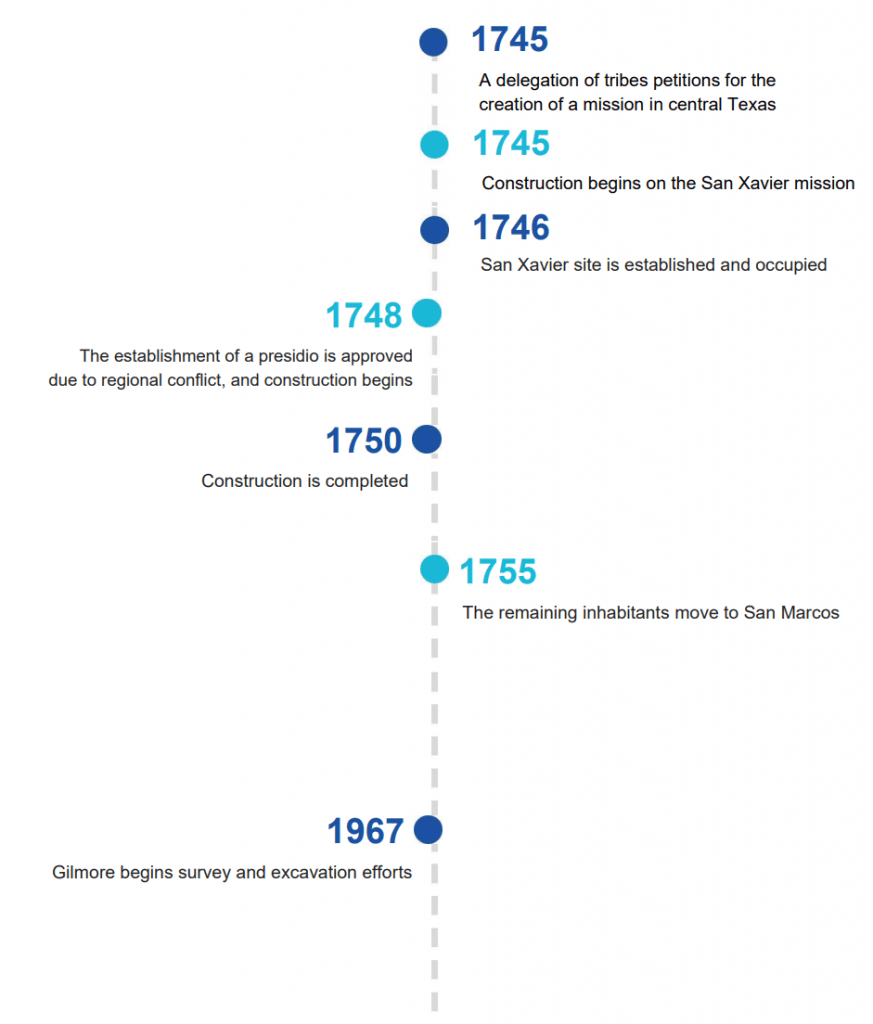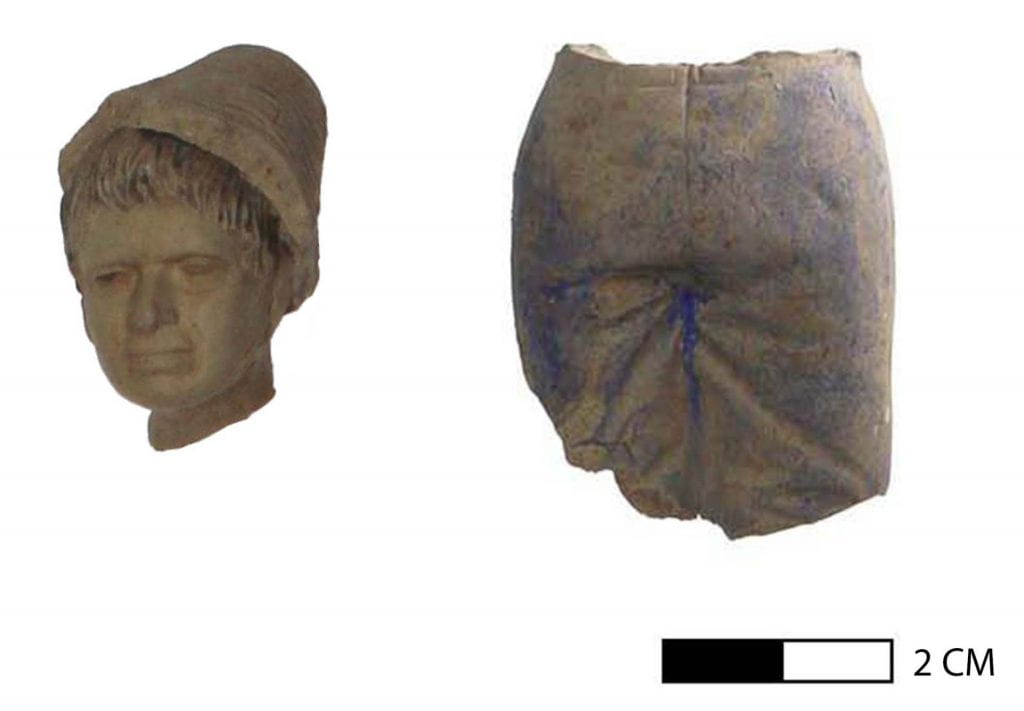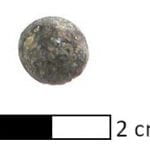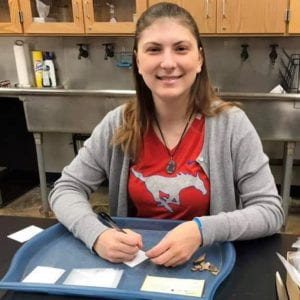Dr. Kathleen Gilmore (SMU Ph.D. 1973) first began working in Spanish Colonial archaeology in order to answer a simple question: Where were the three lost missions of the San Xavier missions complex and how could they be identified archaeologically?
Using four criteria or principles (geography, topography, physiography, and physical cultural remains), she successfully located the San Francisco Xavier mission complex in Milam County, Texas. The area was initially investigated by Kathleen K. Gilmore under a grant from the Texas State Building Commission under the direction of Curtis Tunnell (Reference #73001969). Work included survey of the area to locate archaeological materials and to excavate one of the three mission sites making up the complex, San Francisco Xavier de Horcasitas (41MM11, SMU X41MM1) in 1968 while Gilmore was an M.A. student at SMU. The report from the excavations served as Gilmore’s MA thesis, which was subsequently submitted as Report Number 16 of the State Building Commission Archaeological Program (Gilmore 1969).

Test excavations at the site recovered 18th century artifacts consistent with a mission occupation, including, portions of a structure likely representing the church, Native American burials, and religious paraphernalia. Specifically, the site yielded the remains of 21 individuals from 11 burials and over 8,000 artifacts, including metal, glass, lithic, ceramic, and animal bone items. The SMU Department of Anthropology remained in possession of the recovered materials and, apart from a portion of the collection that was lent to the Milam County Historical Museum, has held the collection in trust since this time.
The San Xavier archaeological site is composed of three Spanish era Missions and one presidio, located between the San Gabriel River and Brushy Creek in what is now Milam County, Texas. Occupied from 1746 to 1755, the San Xavier Missions were part of a renewed period of expansionism by the Spanish and existed on the very edge of Spanish territory. The artifacts uncovered at the San Xavier provide a snapshot of everyday life of the mission occupants, which included Franciscan clergy and missionaries, Spanish soldiers, and multiple indigenous groups from the central Texas region.

In 1745, a delegation of Yojuane, Deadose, Mayeye and Yervipame tribes petitioned the Franciscan College of the Holy Cross at Queretaro about the creation of a mission in central Texas. In need of financial support, Father Ortiz was commissioned to obtain official approval from viceregal authorities in Mexico City. Early in 1747, Father Ortiz received official, though temporary, approval. Construction began in the winter of 1745 and people moved in at the beginning of the following year. Soon after, due to lack of protection, Father Ortiz appealed to the king for the addition of a presido (a Spanish military outpost), which he then received in January of 1748. However, the San Xavier mission continued to struggle against attacks by rival tribes, supply delays, prolonged drought, and epidemics. Eventually, the entire endeavor was declared untenable, and all supplies and remaining occupants of the San Xavier missions were relocated to the new San Saba mission.
Artifacts from the San Xavier Missions
Stone Artifacts
Gunflint
Material: Chert

A gunflint is a small sharp piece of flint or chert that has been shaped so that it ignites the priming in a flintlock. The flintlock is the part of the gun or pistol which has a hammer for striking a spark to ignite the charge which pushes the projectile out. Some gunflints were imported from Spain, but soldiers often made their own with local material or reused found projectile points and repurposed them as gunflints.
Since the early 1600’s, the introduction of flintlock made the knapping of gunflints an important industry. During the 1700’s and early part of the 1800’s, large quantities of gunflints were produced by France and England. The Spanish Crown bought thousands of gunflints to supply to their soldiers in different presidios in the New World. However, San Xavier was at the end of tenuous supply lines, which meant that many soldiers had to make their own gunflint, out of local chert.
Projectile Points
Mission Arrow Points
Material: Chert
These points are thin bifaces, commonly referred to as a “Mission arrow point”. These points are made from chert, a sedimentary rock composed of silica.


Darl Point
Material: Chert

This is a Darl point that has been repurposed and reused by a Spanish soldier as a gunflint. Just like today, people of the past would have found arrowheads on the ground. When there were shortages in gunflints at San Xavier, one soldier was forced to re-use one of those arrowheads in his flintlock.
Pedernales Point
Material: Chert

This point type dates to the Middle Archaic (2500 – 3500 BP), and is ubiquitous in Central Texas. These points are made from chert, a sedimentary rock composed of silica.
Ensor Points
Material: Chert

This point type dates to the Traditional Archaic period (600 BC-200AD), from Central and East Texas. These points are made from chert, a sedimentary rock composed of silica.
Archaic Points
Material: Chert

These points are both thin bifaces that date to the prehistoric Archaic Period occupation of Central and South Texas. These points are made from chert, a sedimentary rock composed of silica.
Ceramic Artifacts
Horsehead Figurine
Material: Clay

Toys help archaeologists understand the daily lives of children at the mission. At a mission like San Xavier horses would have been incredibly valuable, for work and during battles.
Drummer Figurine
Material: Clay

Figurines show archaeologists what styles of clothes would have been worn during the period in which the figurine was produced. This figurine, however, is not from the mission era, it was found near the surface indicating it was placed there more recently, as recently as the 19th century. While it cannot tell us anything about life at San Xavier, it does provide information about how that land has been used throughout the centuries.
Metal Artifacts
Trigger Guard
Material: Metal

This piece, from a soldier’s gun, prevented the weapon from accidentally discharging. The trigger guard, like other components attached to the wooden body of the firearm, is made from metal.
Higa
Material: Metal
These good-luck charms would hang from a horse bridle to protect soldiers in battle.

Knife Hilt
Material: Metal
The colonial families would bring table cutlery, like this knife, from Europe to Texas. Like most common cutlery, this knife base is made of metal.

Chocolate-Pot Handle
Material: Metal

A Mesoamerican drink made from cacao beans became popular among the Spanish colonizers. Similar to cutlery, common kitchenware was made of non-precious metal.
Musketball

Material: Lead
Ammunition on the Spanish frontiers would have been scarce, and carefully policed by the soldiers.
Bone Artifacts
Higa
Parents sewed good-luck charms on the cloaks and blankets of children in the Spanish missions. This higa is carved animal bone.

References
Gilmore, Kathleen Kirk
1969 The San Xavier Missions: A Study in Historical Site Identification. Report 16. Texas State Building Commission Archaeological Program, Austin.
About the Author

Christina Donovan graduated from Southern Methodist University in December 2021 with a Bachelor of Science in anthropology and a minor in ethics. Christina is a member of SMU’s chapter of Lambda Alpha National Collegiate Honors Society for Anthropology. During her time at SMU, Christina was the Vice President (2020) and President (2021) of SMU’s Anthropology Club, a Peer Leader in Student Wellness Champions, and an active member in Armstrong Commons Council. Christina also worked in the SMU Archaeology Research Collections as an undergraduate research assistant, where she organized and curated artifacts and designed website exhibits for their virtual display. After graduation, she is interested in pursuing a graduate degree in Archaeology.